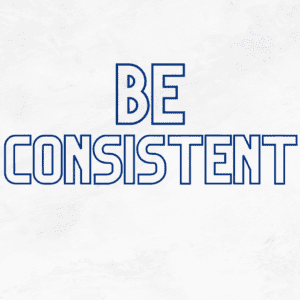Classroom Management
Welcome to our back-to-school series on the ever-important topic: classroom management. When we hear “classroom management” it sounds like a teaching-101 topic because every teacher has been hearing about it since the day they started their teacher education program. But the reality is, many teachers struggle with it—even experienced teachers. In this series we aim to provide you with useful insight and practical strategies that you can employ in your own classroom this school year to improve your classroom management.
In this first article, we’ll examine why classroom management is such an important topic, clarify what is meant by the term “classroom management”, and look at some foundational elements that are prerequisite for any classroom management plan to work.
Why Classroom Management Matters
Effective classroom management underpins every productive learning environment. Well-managed classrooms allow educators to deliver effective instruction and give students the opportunity to meet the learning expectations we set out before them. Does effective classroom management mean that all of your students are going to be compliant and engaged and learn everything you set out for them to learn? No. But ineffective classroom management is a barrier to teaching and learning and will almost guarantee that students will not be as successful as they could be.
By establishing clear procedures, expectations, and routines, teachers create an environment where they can teach and provide students with the necessary structure to learn.
Ever encountered a teacher who talks about how “out of control this group of kids are” or persistently talks about how kids today are so different than they used to be when it comes to behavior?
My thoughts on that? Show me a classroom where students are ‘out of control’, disrespectful, and not engaged in learning and I’ll show you a classroom that is being poorly managed.

Everyone Can Be Good at Classroom Management. Everyone.
I want to begin by dispelling the myth that some teachers are good at classroom management and others just aren’t. Or said more succinctly, some teachers have “with-it-ness” and some don’t.
When I was a new teacher, I certainly had new teacher struggles with classroom management. But that didn’t last long. I actually got good at it pretty quickly. Early on my principal told me that I had ‘with-it-ness’ and that was good because not every teacher had it. I didn’t even know what that meant at the time, but I knew it was good and walked a little taller knowing that I was “with-it”.
Here’s what I didn’t understand at that time: no teacher is born with this mysterious “with-it-ness” (aka the ability to manage and control a classroom full of kids with what seems like a natural, in-born ability). The teachers who do seem to walk in the door on their first day with good classroom management learned it from someone along the way. It might have been their own teachers when they were in school or even their parents. Or it might be that they are highly in-control people (control freaks unite!)—something that they also learned somewhere along the way. Whatever the case, it is a fact that they picked up some things before they arrived in that classroom that made it seem like they had some natural ability that not everyone has. Which is absolutely not true.
So, let’s dispel that myth. There is no such thing as with-it-ness and every teacher can learn to effectively manage a classroom.

Defining Classroom Management
One issue with teachers who struggle with classroom management is that they don’t fully understand what it means. At its core, classroom management is about creating an organized and purposeful environment where both teaching and learning can flourish. It involves a range of strategies and techniques aimed at promoting a smoothly functioning classroom and a positive culture where students understand and can meet clear expectations for engagement and behavior.
Classroom management is sometimes confused with “behavior management” or “discipline”. That’s an unfortunate misunderstanding because it disregards the majority of what constitutes classroom management. It might be helpful to think of classroom management as an umbrella that covers many pieces and parts. Behavior management and discipline are simply parts under that umbrella. And if classroom management is well-implemented, they will actually be rather small parts of the overall plan!
Pre-requisites for Effective Classroom Management
Before you sit down to write out rules and procedures and routines, take some time to reflect on what I consider pre-requisites for effective classroom management: establishing a positive classroom culture and being consistent
Classroom Culture
Classroom culture is its own dense topic, but it is also inextricably intertwined with classroom management. If your classroom is one where students know they are valued and respected, where they feel encouraged in their efforts to learn, and where strong teacher-student relationships prevail, you are going to have a much easier time managing the class. When students know you value and respect them, they are much more likely to value and respect you. When students feel encouraged, they are more likely to engage in the learning activities you set before them. When you take the time to establish individual, authentic relationships with your students, they are more likely to care about what you say and be more inclined to want to ‘please you’. When you establish a sense of community and belonging in your classroom, students are far more likely to care about what is happening in that classroom.
The teacher sets that tone for classroom culture. Classroom culture sets the stage for effective classroom management.

Consistency
This should go without saying, but it is too important not to say. Teachers must be consistent. Consistent in their attitudes and language toward students, consistent in their demeanor, consistent in the procedures, routines, and expectations you establish, consistent with incentives, consistent with consequences.
If you are not consistent, it will only take students a few days to stop putting forth the effort to go along with your classroom management plans.
I know that you are not robot. So do the students. You are not going to be perfect or infallible. Ever. But you must do all you can to be consistent, and when you mess up, own it. Tell the kids you messed up and expect they’ll show you grace in the same way that you show them grace when appropriate.
When teachers remain consistent, students develop a clear understanding of boundaries and feel secure in their learning space. Consistency extends beyond discipline – it also applies to the way we deliver instruction, provide feedback, and interact with students daily. When teachers maintain consistency in in their approach, it helps establish a sense of stability and predictability for students, which is crucial for effective classroom management.
No consistency, no effective classroom management. And a pro-tip for you: It’s easier to be consistent when your classroom management isn’t overly complicated. Doable wins over complex every time.

The Many Flavors of Classroom Management
Finally, I want to emphasize that there is no “one way” to implement effective classroom management. Every teacher is different, so it’s likely that their classroom management styles are going to also be different. So, while there are some tried-and-true best practices, there is also plenty of room for flexibility. Keep that in mind as you follow this series and read other sources to help you improve your classroom management.
Follow us on social media or sign up for our newsletter to be sure you don’t miss the next article in this series, which will focus on the practical things you should be doing prior to the start of the school year and during the first weeks of school to get your classroom management plan off to a successful start!
